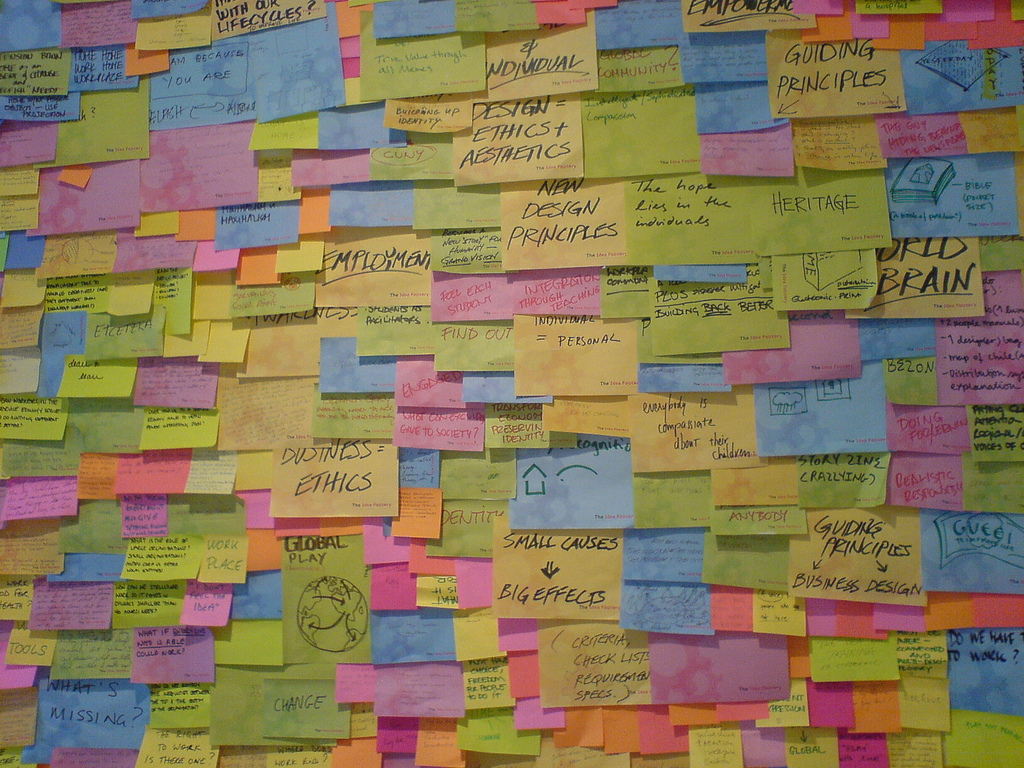High-impact innovation? Forget brainstorming!
When Apple’s Chief Financial Officer Luca Maestri, who was recently awarded the Alumnus Luiss 2016 prize, was asked by a student what he had learned from his experience at Apple, he replied:
"The detail oriented culture. One imagines these huge companies as creative laboratories - I'm also thinking of Amazon, Google, Facebook - but really, they are "execution machines", they have some very strict processes. It's a bit like being in the army."

This statement will not surprise those with a deeper understanding of innovation processes, but it also demonstrates how much entrepreneurs and managers are often tied to a fanciful notion of what innovation is – the result of genius and off-the-cuff illumination – which does not in fact correspond to reality.
Staying on the subject of Apple, let’s think about Apple Stores, the most profitable stores in the world on a square metre basis.
These stores have become some of the best in the world thanks to some simple innovations that can be adopted by any company in order to create deeper links with their customers. For example, there are no cashiers in an Apple store, only experts and consultants.
“People don’t just want to buy a personal computer. They want to know what it can do, and that’s precisely why we’re there.” Steve Jobs
The basis for the design of Apple Stores did not come from a group of people sitting around a table brainstorming, or a small group of creatives locked in a room. Apple created an innovative retail experience through studying a company known for its customer experience – the Four Seasons hotel chain. It’s not a plethora of superficial ideas, but a vision developed in depth.
Therefore, the inability of many companies to generate truly effective innovation does not come from a lack of creativity or genius in its people, but rather by lacking a system of innovation. When we talk about an Innovation system we mean:
• A set of clear and repeatable codified steps which, if performed correctly, lead to the continual generation of high-impact innovations.
• An environment and culture (“Social system”) that promotes innovation (see: The 5 myths of innovation for further details).
From this point of view, the Italian business landscape is quite desolate. Rather than a system of innovation, brainstorming is often referred to as the primary method when attempting to innovate. This is the furthest thing from the high-impact innovation processes employed by the most successful companies!
Do you want to innovate? Then don't brainstorm

Brainstorming spread and became commonplace after the late 30’s thanks to the advertising executive Alex F. Osborn. Specifically, in a brainstorming session, the aim is to conceive of many potential solutions to a problem, prompting each person in the group to think of as many ideas as possible.
There are four main principles behind brainstorming:
- No criticism of other people’s ideas.
- To welcome the turnover of ideas.
- Quantity before everything else.
- Work on perfecting every idea.
As early as 1958, however, a study carried out by Yale University (Taylor, DW, Berry, PC, & Block, CH 1958. “Does group participation when using brainstorming help or inhibit creative thinking?” Administrative Science Quarterly, 6, 22-47) showed how individuals are able to perform better on cognitive problems when compared to groups using brainstorming.
Entrepreneurs and managers who want to achieve excellent results from their own innovation processes are therefore called upon to set aside “creative” solutions in favour of building their own innovation system of based on their business and market context.
How do you start thinking about an innovation system?
4 steps to increase the ability to deliver innovative products and services
1. Don't start with a product, but rather a problem
Apple had the clear goal of reaching customers, namely they wanted to enrich their customers’ lives through the customer experience in their stores. They designed the service on this basis.
Moving to the more familiar world of products, James Dyson the eponymous founder of Dyson – did not start out thinking about making a vacuum cleaner. He was unhappy with the fact that after a short time normal vacuum cleaners lost their suction power due to dust clogging up the bag. Finding a solution to achieving this goal (continuous suction with no loss of power) pushed him to create the cyclonic vacuum cleaner and, among other things, has allowed him to accumulate personal fortune of more than $3 billion.
Customers do not buy and do not want products. They buy solutions that fulfil an objective.
Identify an objective relevant to your customers’ needs and help them reach it. This will allow you to work on something that is of value to your customers.
2. Structured exploration of different solutions
Once you’ve identified a problem for your customers, explore and identify the different possible solutions which will help customers solve that problem better than any of the others already available. Analyse, for example, alternative sectors.
In the case of Apple, the alternative industry analysed was the hotel industry, in particular the Four Seasons chain. Starting from the product (the point of sale) it would have been difficult to imagine Four Seasons as a source of inspiration. However, having clearly defined what they wanted to offer to the customer (the goal) – i.e. enriching their lives – it was easy to then identify hotel chains as a sector that also aims to enrich the customer experience.
In Dyson’s case, the idea of cyclonic technology came from observing a sawmill. Sawmills, in fact, have the problem of continually having to suck up wood shavings and they’ve solved this by using cyclonic technology.
Another possibility is provided by analysing how different customers, for example customers from different market segments, solve a particular problem. For example, some clients who are more careful with their money keep fit by buying books and video tapes to work out at home to. Others are willing to buy a gym subscription. Can I create something that satisfies the needs of both groups?
Starting with a problem and not from a product opens up different possibilities to explore that can provide unconventional ideas to work on which will generate high-impact innovations that customers will love.
3. Create your differentiating vision
Successful innovations are able to produce, with respect to a customer’s needs, superior results in terms of function, emotion or status than those of competing products/services.
Apple stores offer a markedly superior and different experience compared to any other store.
What do you want to offer customers to help them reach the goal that you’ve identified? In what way is your solution different from those already on the market? Why would customers prefer it? These are all questions to be answered in creating your differentiating vision.
4. Experiment and test your vision
Experiment with your vision. What are the underlying assumptions of your vision? What are the possible reasons that may cause your vision to fail? Once you have identified these factors, you need to experiment with customers to see if the underlying assumptions of the vision are true. If so, it is possible to proceed to the real development of the solution. Otherwise, you will need to rethink the vision.
When Stewart Butterfield realised that the video game he was developing – Glitch – was not getting customer feedback, he decided to change his vision by shifting attention to a communication system rather than gaming. And thus Slack, the fastest-growing business communication tool, was born.
Knowing how to experiment effectively with customers is one of the most important skills in the current competitive environment. It can even be done scientifically! If you’re unable to do this yourself, look for people who can help you in this before using all your resources following a road that will not yield the desired results.
These steps are not a magic wand to transform every company into the best in the world in their field, but learning how to work by following these tips can help entrepreneurs and managers be more innovative and more productive in terms of innovation… saving time and resources wasted in endless brainstorming sessions that never come to anything!
Article by:

Gabriele Colombo
Principal Lenovys
Gabriele has been responsible for defining, planning and implementing research and consulting programs related to the world of innovation and continuous improvement; He also brings this experience to the role of lecturer project management and innovation manager at the School of Management of the Politecnico di Milano.


